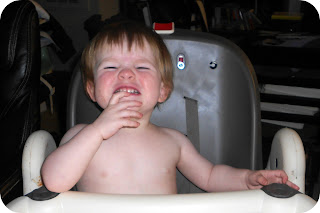Keeping Smiles Bright
When it comes to dental care, parents sometimes get caught up in a bit of confusion. How soon should a child start flossing? When is it time for braces, and how do you identify that need? How do you pick the right group of children’s dentists and when should you schedule the first visit?
Cavity prevention is only one part of the process. Parents usually know a bit about what is needed, but they don’t always understand the best way to get it started. Here are some pointers that will make the decisions come easier.
When Dental Care Should Start
See that first tooth. It means that dental care should already be in process. By the second trimester of pregnancy, your baby’s teeth are already forming. By birth, your baby is likely harboring twenty primary teeth and some of the jaw teeth, although not yet visible, are already fully developed within the jaw.
Advice from the American Dental Association (ADA) says your child should visit the dentist prior to his or her first birthday. The basic examination will help you understand the proper techniques for flossing and brushing a baby’s teeth. It will also help get your children comfortable with dental visits.
Here are some things you should learn from this first visit:
- Feeding habits: Putting your baby to sleep with a bottle in his or her mouth can lead to enamel erosion, bottle mouth, and pitted and/or discolored teeth.
- After feedings: Prevent bacteria buildup by softly wiping your infant’s gums with a damp washcloth.
- After teeth begin to show: Brushing begins. Use gauze or a soft toothbrush. Do it once at the end of the day and more often if circumstances indicate the need.
If you aren’t already taking your child to a dentist, get started right away. Locate a dependable children’s dentist. Your family dentist can help in the selection.
Dealing With Early-Year Dental Decay
Babies are not immune to teeth and gum problems. Feeding habits are important and while it may be convenient to prop your child on a pillow to feed with a bottle in his mouth, it is not expedient to good dental care. Cavities and even early tooth extraction can be the result of poor feeding habits.
As your child ages, the dental care process needs to be adjusted so that even toddlers begin the process of learning good dental care. Help your child establish specific times for drinking and feeding. Make certain that your child care providers follow suit.
Focusing on Special Dental Care
The modern age has created a world of specialization. Not every family medical practitioner has the extended learning that translates from adults to kids. Perhaps your child can benefit from the skills associated with pediatric children’s dentists. These practitioners are especially trained in treating kids. They may not have greater skill than your family dentists, but pediatric dentists are trained to focus on the dental issues that are specific to children.
Like your family dentist, your pediatric dentist knows how to help you ward of potential dental complications. By providing routine maintenance such as checkups, cleanings, and early recognition of special problems including overbite and complication with jaw alignment, your pediatric dentist can help you keep your child’s teeth and gums healthy. If necessary, he or she will direct you to the proper dental specialist.
The Long Range View of Cavities
By age 2-1/2 or so, most of your child’s primary teeth should be in. Your dentist may begin to apply topical fluoride. By hardening toot enamel, fluoride helps ward off cavities and other common childhood oral diseases.
- Food left on the teeth results in bacteria.
- The bacteria result in acid collections on the tooth.
- This softens the enamel and eventually leads to a hole in the tooth.
- This hole is called a cavity.
- By toughening the enamel, fluoride helps make the teeth more resistant to acid penetration.
Some towns dispense fluoridated tap water. Most toothpaste also includes fluoride. If it seems that your fluoride resources are less than desirable, ask your children’s dentist about fluoride supplementation. Note that too much fluoride can result in discoloration of your teeth.
For older children with permanent teeth, consider having your dentist apply resin to the back of the teeth. This sealant helps keep bacteria from settling in the crevices of your child’s teeth, which in turn seals out decay.
Closing Tips
- Be sure they brush twice a day
- Be sure they floss
- Supervise your kids dental care
- Brush after the intake of any from medical consumption, including antibiotics
- Model good oral care and teach your kids to follow the pattern.
Drew James works for an Indianapolis pediatric dentist. When out of the office, you can currently find him working in raised-bed gardens, going for long runs, and making travel plans.
Pin It

